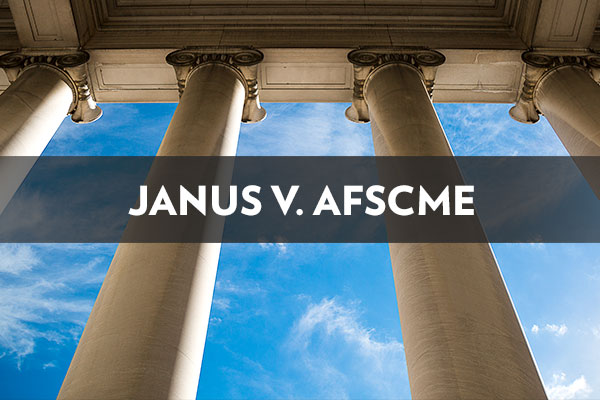Media

Government Union Efforts to Restrict Workers’ Rights
June will bring a U.S. Supreme Court decision potentially restoring First Amendment rights to millions of public sector workers. The response from government union leaders? Schemes to continue—and further restrict—public sector workers’ constitutional rights.
Pennsylvania is one of 22 forced-union states requiring public employees to pay compulsory “fair share” fees to a union they didn’t join. Mark Janus, lead plaintiff in Janus v. AFSCME, contends being forced to join an organization and fund their political activities violates his free speech rights.
Read more about the case here.
If the Court sides with Janus, public sector workers will no longer be forced to send hundreds of dollars annually to an organization they didn’t join—meaning unions leaders will lose revenue currently confiscated from employee paychecks.
A National Education Association (NEA)-commissioned survey found between 57 and 69 percent of union members would not pay a union fee if given a choice. To fight this loss of funds, union leaders are modifying collective bargaining parameters to trap members.
NEA sent a document “8 essentials to a strong union contract without fair-share fees” to local union leaders, while the American Federation of Teachers (AFT) provides recommendations to “Convert fair share papers to full membership!” Their cumulative goals include:
- Immediate access to new employee information, including personal contact information. This allows unions to quickly bombard all new hires with pro-union messaging. In many cases, it would roll back employee privacy rights.
- A “prominent place” at new-hire orientations. This gives unions a captive-audience meeting to sell union membership.
- Creating “alternate means to establish proof of membership” that automatically enrolls employees in unions. This tricks workers into becoming union members.
- Exclusive access to work locations and communication during working hours, without charges or prior permission from administrators. This grants only union leaders the right to communicate and meet with workers on the taxpayer dime.
- “Release-time” for public employees to fulfill union responsibilities without loss of pay, benefits, or seniority. This subsidizes union operations with public funds, a practice already widespread in Pennsylvania.
- Required employer payroll deduction of dues and political action committee (PAC) contributions. This guarantees a steady stream of union funds—using taxpayer resources.
- “Maintenance of dues” payments for at least a full year, even if members resign. This locks non-members into paying hundreds of dollars in dues. Minnesota and Los Angeles unions have already altered membership forms making dues deduction continuous “irrespective” of membership status. Thus, even non-members must pay union dues for at least a year “even if state law provides that employees must be allowed to resign membership immediately.”
Regardless of the Court’s decision, these union tactics reveal union leadership more concerned with maintaining their funding levels than with respecting the wishes of workers. Pennsylvania government workers and teachers already face many of these restrictions. They deserve more, not less freedom.